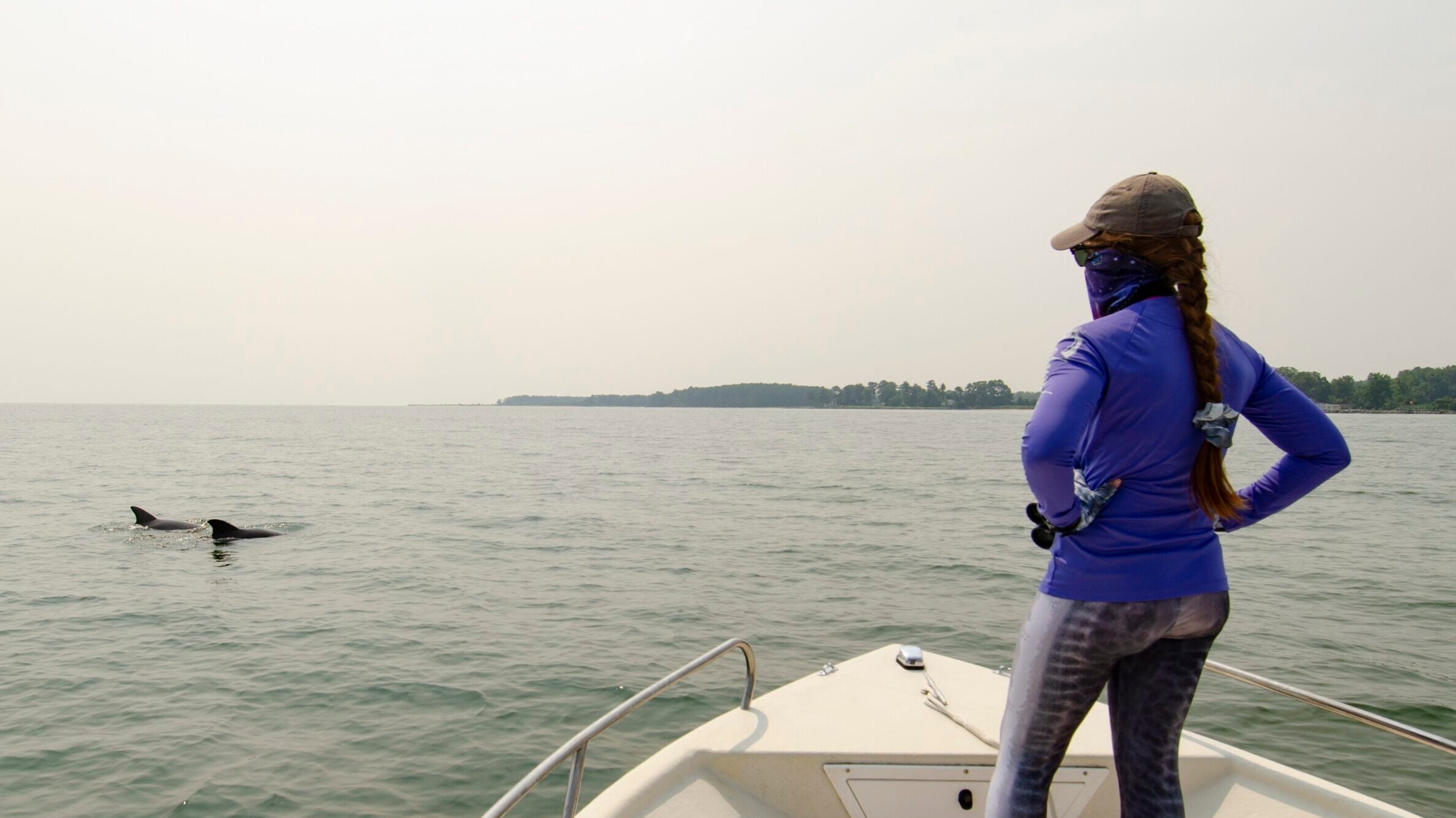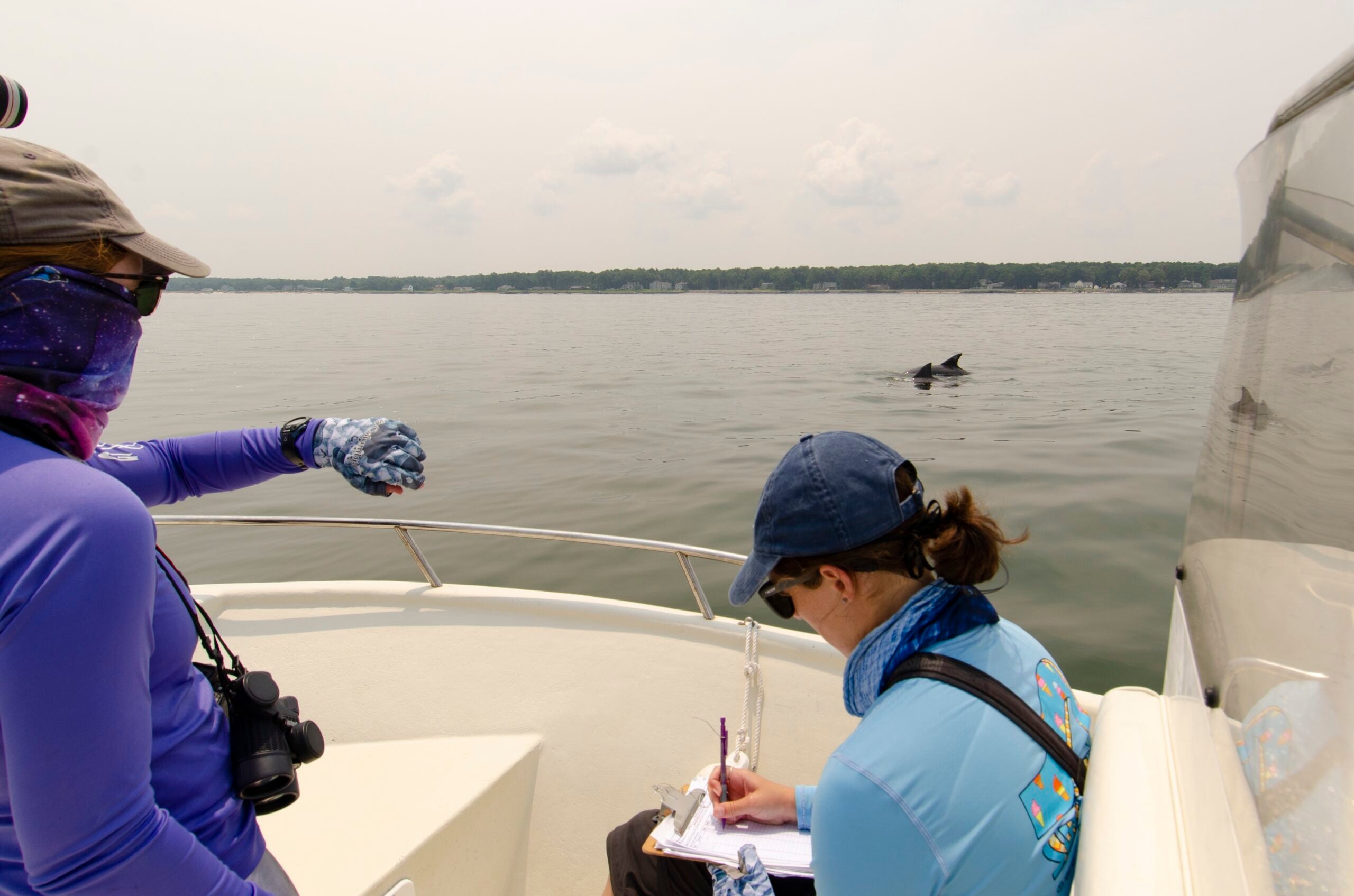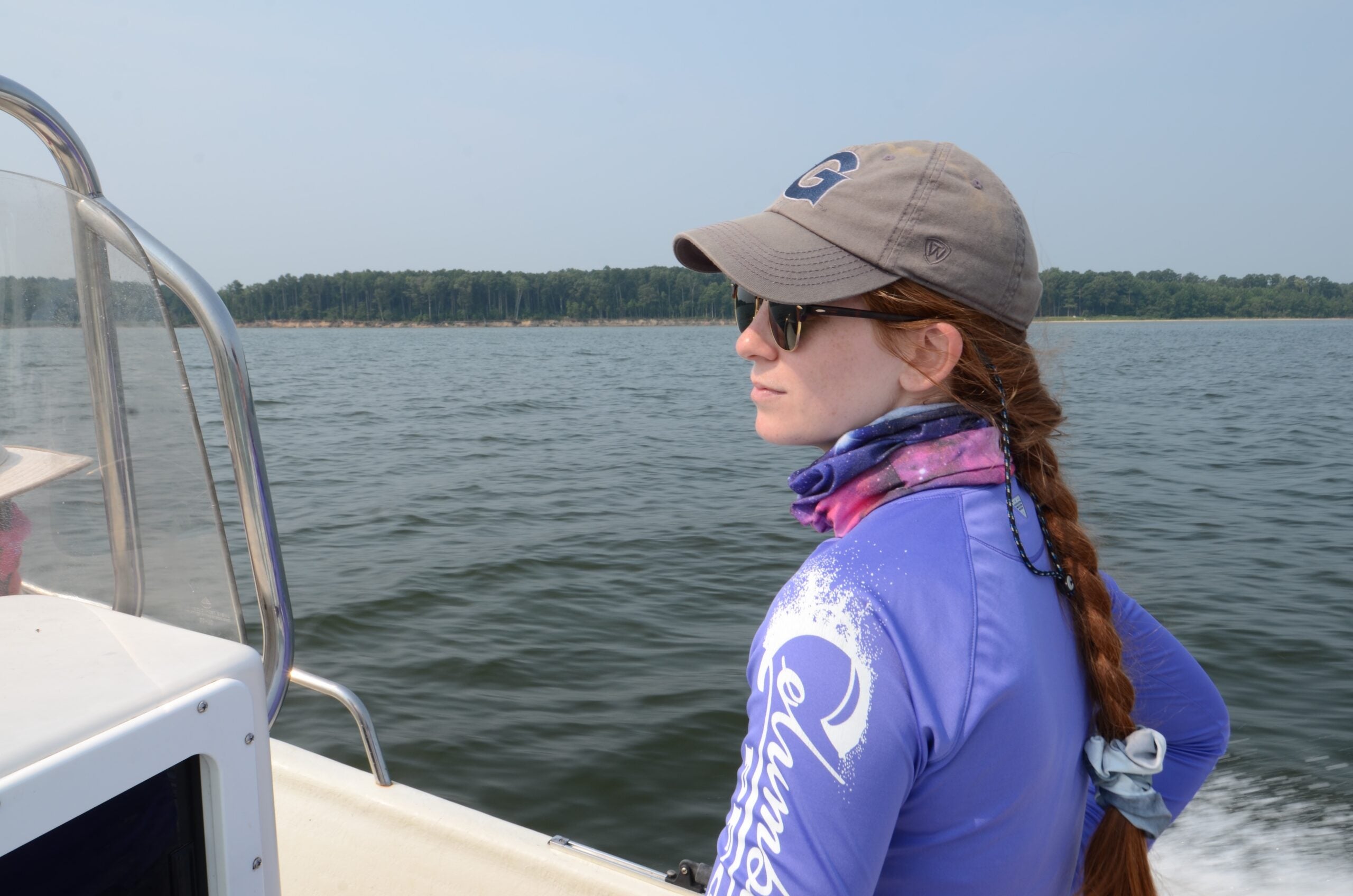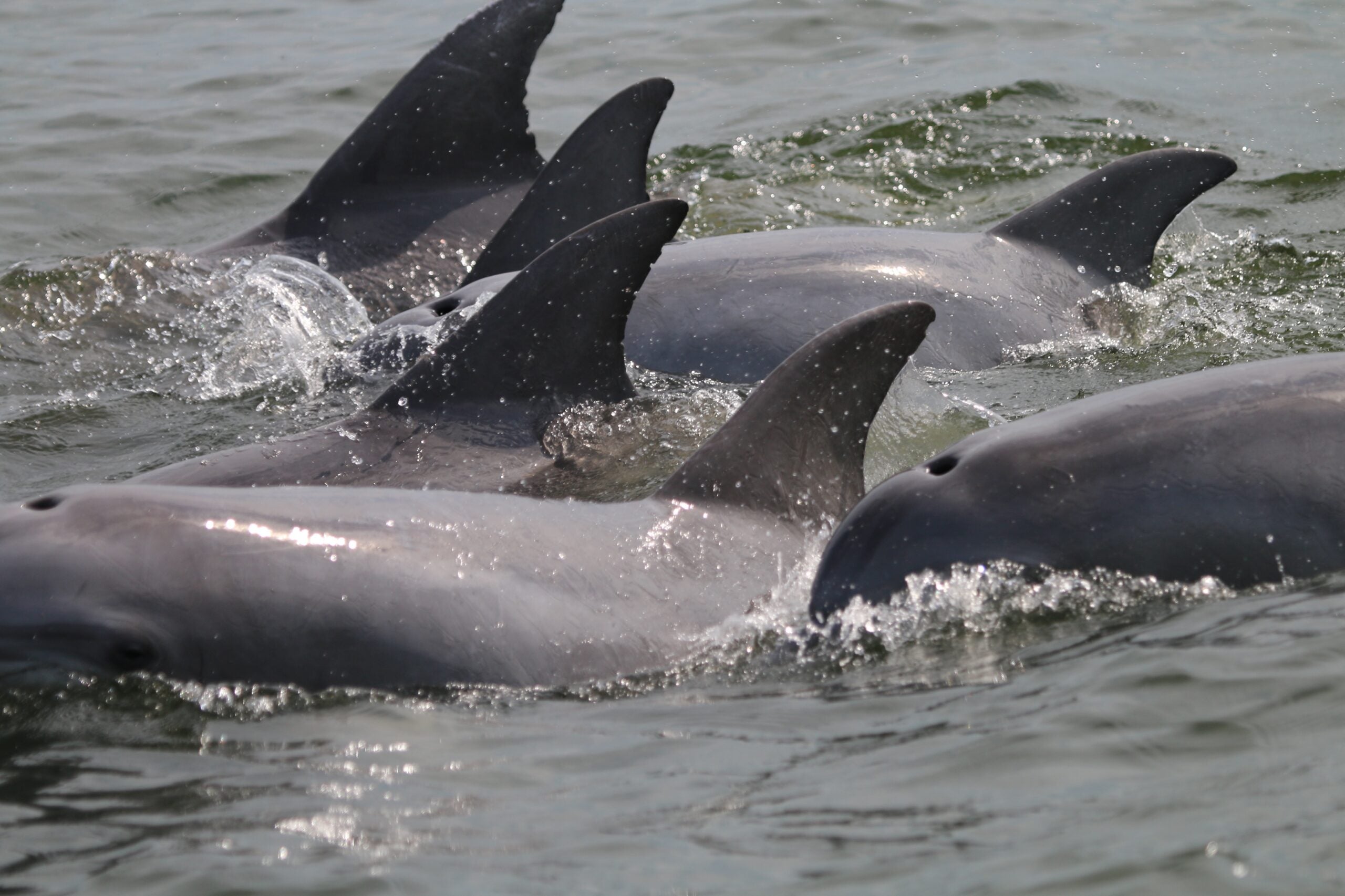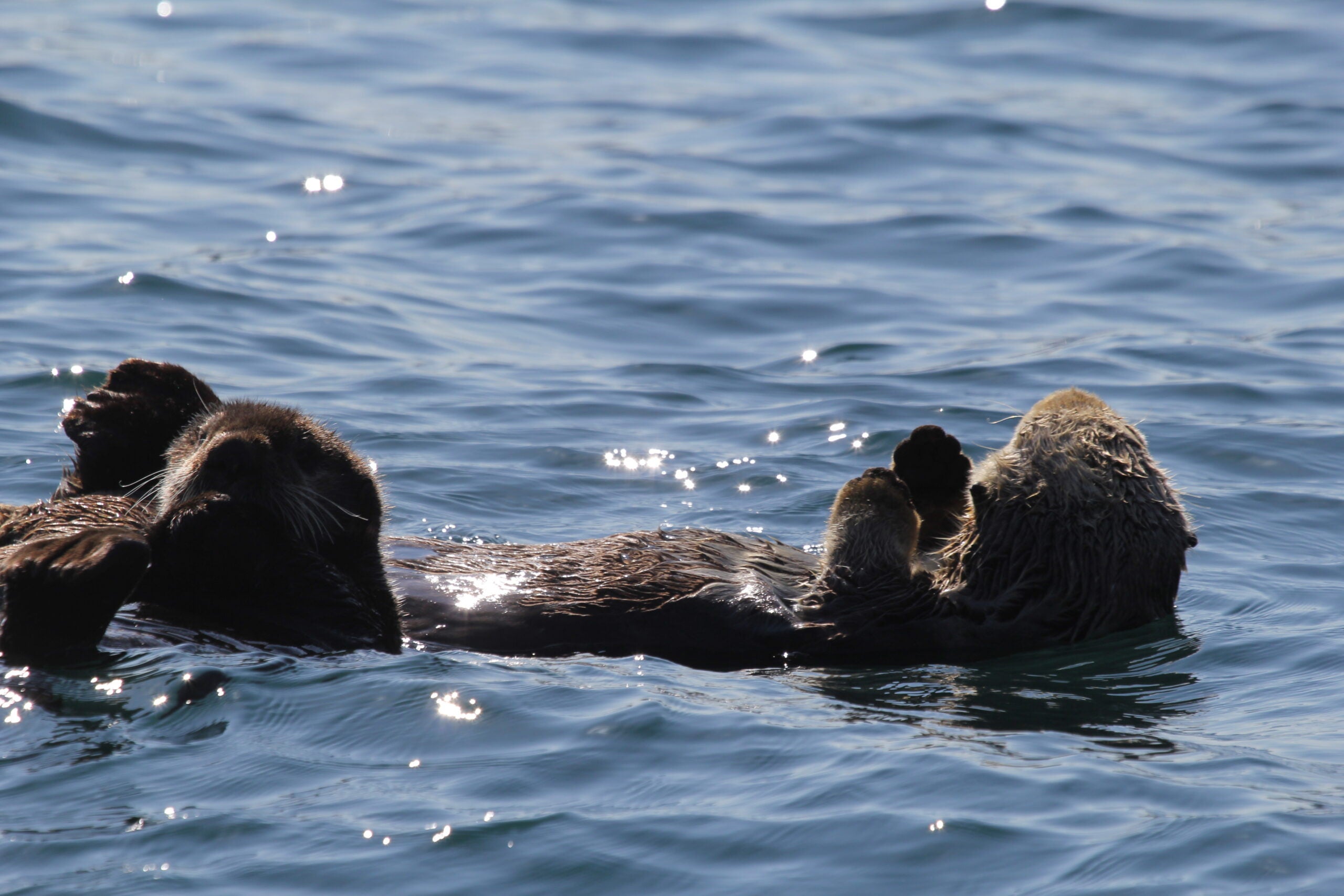“Understanding disease dynamics in dolphins is especially urgent now because their populations are facing increasing threats.”
– Dr. Melissa Collier
Seasonal Journeys, Deadly Breaths: Tracking Dolphin Disease Spread
June 30, 2025
Along the U.S. Atlantic coast, groups of bottlenose dolphins (T. erebennus) can be seen surfacing together, rising and exhaling in near-perfect unison. This behavior, known as “breathing synchrony,” is part of their complex social lives, strengthening bonds but also creating opportunities for disease transmission.
Two new papers from Georgetown University researchers and their collaborators combine detailed behavioral observations and migratory tracking in a novel metapopulation model that sheds light on past mass die-offs and could help predict and manage future disease outbreaks.
With climate change increasing pressures on marine ecosystems, understanding how respiratory diseases spread through dolphin populations has never been more urgent.
Understanding the Bond—and the Risk
In the first study, appearing in June in Communications Biology, the researchers document how dolphins coordinate their breaths in tight clusters. This practice, rooted in social bonding, also facilitates the transmission of dolphin morbillivirus (DMV), a contagious pathogen responsible for two significant mortality events that caused up to 50 percent population declines of Tamanend’s bottlenose dolphins along the U.S. Atlantic coast twice since 1987.
“Understanding disease dynamics in dolphins is especially urgent now because their populations are facing increasing threats,” explains lead author Dr. Melissa Collier, a postdoctoral fellow in Professor Shweta Bansal’s lab in Georgetown’s Department of Biology. “We’ve seen several large-scale mortality events in the past few decades from dolphin morbillivirus that have devastated populations globally, and their recovery is often hindered by environmental and anthropogenic stressors brought on by climate change, pollution, and fisheries.”
By analyzing individual variations in breathing synchrony, the team was able to link these behaviors directly to infection risk, providing a clear mechanism for understanding disease spread. Juveniles and males showed the highest vulnerability, reflecting their stronger tendencies for close breathing synchrony.
Migration, Metapopulations, and Modeling
The second study—published today in the Proceedings of the Royal Society B—combines behavioral data with seasonal migration patterns from a collaborative photo-identification catalog. “Studying wild animal behavior is incredibly difficult: imagine trying to track how hundreds of animals interact with each other across vast landscapes, terrestrial or marine, over months or years,” says Dr. Shweta Bansal, senior author of the study at Georgetown. “This study demonstrates how detailed behavioral data can transform our ability to predict and prepare for disease outbreaks, representing a major breakthrough in wildlife disease modeling.” The result is the first metapopulation disease model for dolphins, which captures how migration and social behavior interact to shape epidemics.
Data from the National Oceanic and Atmospheric Administration (NOAA), Georgetown University, and research teams distributed along the Atlantic coast allowed the team to simulate past DMV outbreaks and project high-risk regions and seasons for future events. The model highlighted their northern spring migration and breeding season as particularly susceptible periods, when dolphins congregate in dense coastal areas.
“Studying wild animal behavior is incredibly difficult: imagine trying to track how hundreds of animals interact with each other across vast landscapes, terrestrial or marine, over months or years.”
– Dr. Shweta Bansal
Dolphins as Early Warning Systems
The research also identified “sentinel populations”—groups that could signal the start of an outbreak. Dolphins that inhabit North Carolinian estuaries—areas where freshwater from rivers meets saltwater from the ocean—emerged as ideal candidates for targeted monitoring given their location and observability, as they are situated along key migratory routes and journeys well-documented through photo-identification.
Co-author Dr. Janet Mann, Distinguished University Professor in the Department of Biology and the Department of Psychology in the College of Arts & Sciences, highlights the broader implications of dolphin populations and disease transmission. “Infectious disease and epidemics are increasing in recent years. The evidence is pretty strong,” she notes. “At the same time, marine mammals are on the front lines of climate change and act as sentinels for larger problems in our oceans.”
But traditional disease surveillance in dolphins often relies on opportunistic strandings or costly capture and release studies that require extensive permitting and resources. This approach instead uses behavioral and observational data collected more routinely and at larger scales to model disease spread and prevalence, offering a cost-effective, scalable alternative with high-confidence results.
“Infectious disease and epidemics are increasing in recent years…At the same time, marine mammals are on the front lines of climate change and act as sentinels for larger problems in our oceans.”
– Dr. Janet Mann
Looking Ahead
“The research essentially provides a roadmap for moving from reactive disease management to proactive surveillance and preparedness, which is critical as climate change creates new disease challenges for marine ecosystems,” reflects Bansal.
The team hopes to see NOAA and regional partners use these findings to guide strategic surveillance, focusing on high-risk populations and migration corridors. Such efforts could enable earlier detection of outbreaks and more effective intervention. Using these methods, management agencies can pinpoint which dolphin populations are most vulnerable to disease—and why.
Given the flexibility of this model, Collier envisions expanding this modeling approach beyond DMV to other respiratory diseases in marine mammals. As concerns grow over pathogens affecting seals, manatees, sea otters, and others, non-invasive, data-driven disease forecasting could become a cornerstone of marine wildlife health management, a crucial key to sustaining marine mammal populations in an era of rapid change.

